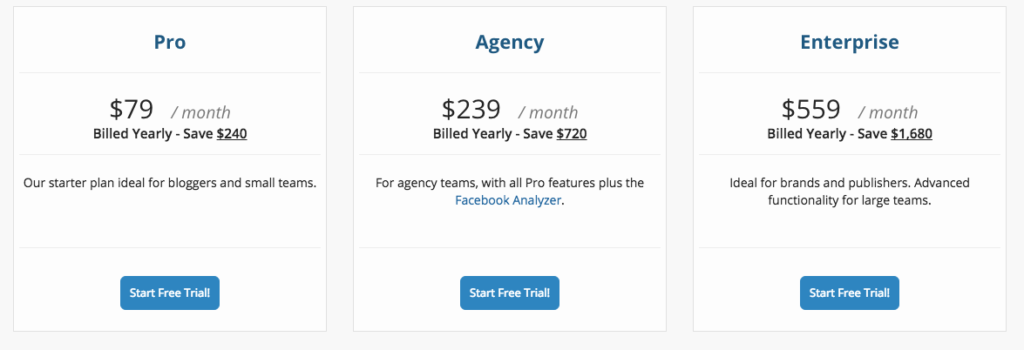There are 1,000s of marketing and sales strategies.
You have no chance to ever try them all.
But there is one sales strategy you can’t afford to overlook.
Tiered pricing.
Tiered pricing has accounted for 25% of all of our revenue over the last 18 months.
If you are selling a product or service online and aren’t using tiered pricing, stop whatever you are doing right now, read this article and implement it immediately. It’s one of the easiest tweaks we’ve made to our sales process and has had the single most dramatic affect.
The story:
About a year ago I wrote this post, which outlined how we launched our first flagship product, Get 10,000 Subscribers. It included all the data and numbers from the launch. If you haven’t read it, bookmark it. It’s solid.
Here are the CliffsNotes…
10ksubs first launched in the spring of 2015. During that launch, we had two separate packages for customers to choose from.
Here is what they contained:
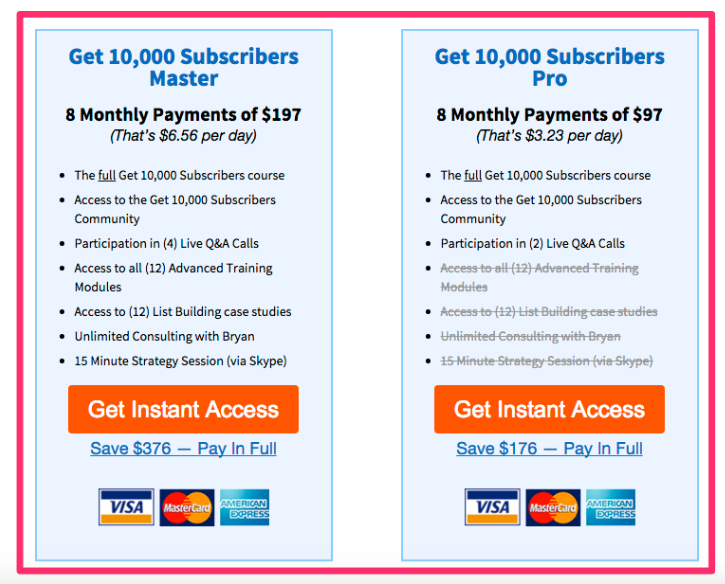
Our customers bought the packages at a nearly identical rate.
55% of students purchased the $1,200 high-end package, while 45% of students purchased the $600 low-end package.
Funny thing is, I would have never known to look at these package splits had it not been for writing that launch recap post.
And from my sales background, I knew three big things about these numbers as soon as I saw them.
Big Thing #1: I knew that, ideally, I didn’t want more than 20% of our sales coming from our highest package.
Big Thing #2: If more than 20% were buying that package, that meant it wasn’t priced high enough.
Big Thing #3: We were leaving a lot of money on the table by not giving people a way to pay us more money.
I ended up making one tiny change with our second launch of 10ksubs that brought in an extra $102,224 in revenue.
I’ll share what that one tiny change was in just a minute.
But first… Let’s talk about pricing tiers.
You’ve likely seen examples of tiered pricing even if you didn’t know what it was called.
Tiered pricing is when you give your customers separate options for purchasing your product or service. For each separate “package,” more value is added and the price increases.
For example…
Imagine you are a sci-fi author who has just released a new book.
You’re a hustler and know you need to pound the pavement to sell your book, so you set up a stand at a bookstore and sell 10 copies of your book at $10 each.
10 books @ $10 each = $100 of revenue

The second day, you get smart and decide to create a second package to sell along with your book.
So instead of just selling books for $10 each, you offer two packages:
Package A = The book for $10
Package B = The book + a detailed map of the galaxies described in the book + audio book version + access to a cool membership community to discuss the book’s stories and characters for $50
You still only make 10 sells that day, but this time, 6 of the 10 buy the book for $10 and 4 people buy the package for $50.

You just increased revenue by 2.6 with one little bitty tweak.
WOOT!
But it gets better.
🙂
Because 40% of your customers bought the higher-end package, it shows that there is a sizable group of people that will pay you more money if you’ll only let them. (Remember the 20% rule?)
So on the third day, you add another package to the mix.
For $1,000, a person can get all the super-cool stuff in the $50 package PLUS they get to spend the day with you over lunch, discuss the book and ask questions about your writing process.
And what happens?
You still only make 10 sales, but this time 6 people buy the book for $10, three people buy the package for $50 and 1 person buys the $1,000 lunch-outing package.

Now instead of making $50 per day, you’ve increased your revenue to $1,210 per day. And all you did was give people a way to pay you more money.
If your mind isn’t swimming with ideas by now, check your pulse.
Tiered pricing is freaking amazing.
It’s one of the simplest and most powerful knobs you can turn in your business to increase revenue.
Checkout these 11 examples of tiered pricing in the real world
KingSumo offers personal and developer licenses for their giveaway software plugin. You can use their plugin for one site for $198 or on unlimited sites for $594.
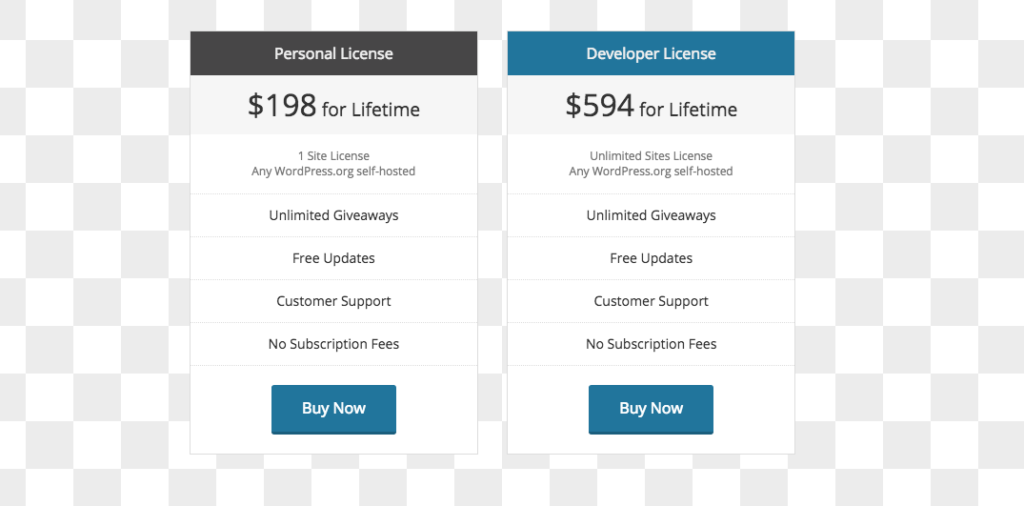
Shopify, a software company that offers an e-commerce platform, sells three membership types for users wanting to start an online shop. Each tiered package level includes more services and integrations.
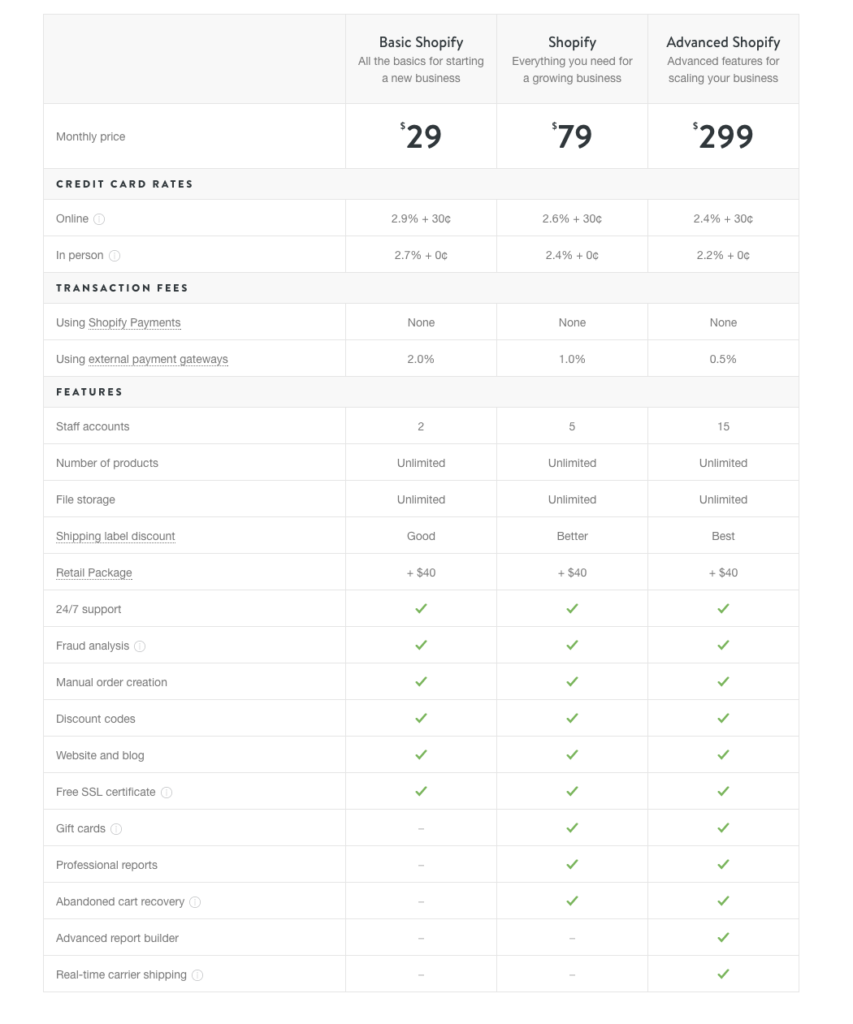
ThemesKingdom is a great example of using tiered pricing for a digital product, that most just price as a one-time-purchase. The company creates WordPress website templates. By adding different tiers, customers have multiple options for purchasing the template and can choose one that best fits their needs.
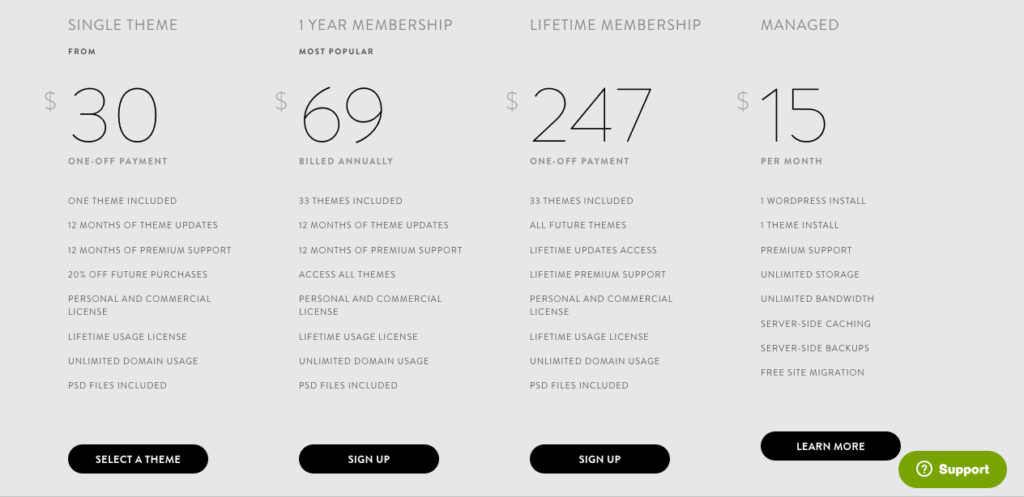
BuzzSumo is an online search tool that tracks and ranks content from social sites (like Facebook, Twitter, etc.). To utilize their online tool, customers have three different pricing options. Each level specifies who would most benefit from that specific package.
Dollar Shave Club took a simple thing that people do every day (shaving) and turned it into an experience. Customers sign up for one of three different packages to have a monthly subscription of razors sent to their house.

Scaling Up is an online course using Verne Harnish’s methodology to scale businesses of all types. He offers three separate packages to administer his course, based off the type of learning style you need for your business.
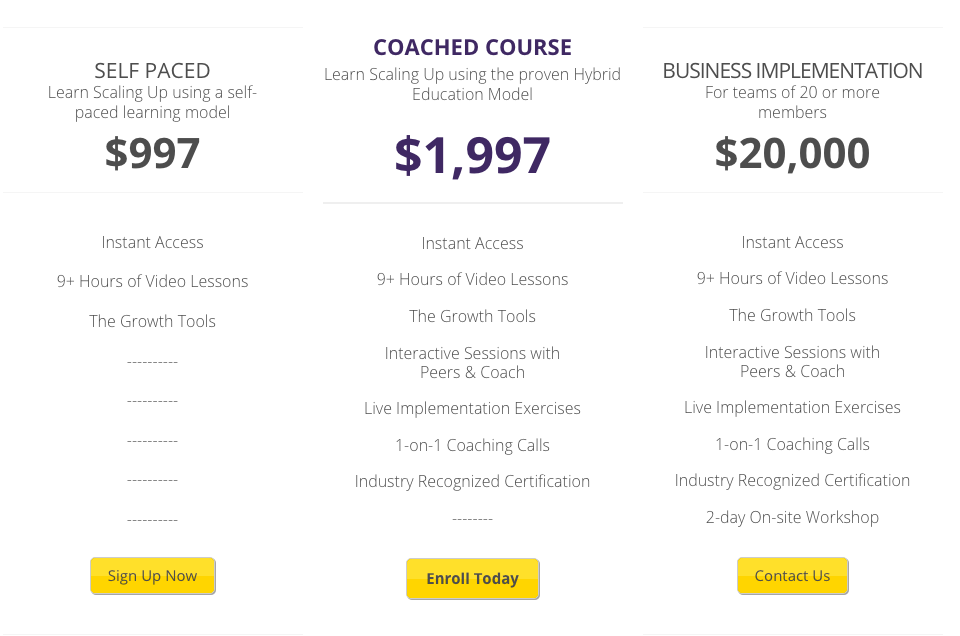
The App Design Handbook by Nathan Barry is one of the few ebooks that I’ve seen utilize the tiered pricing model. The results were enormous though. Within 48 hours of his first sell of the ebook with packages, Nathan brought in over $19,000 (source).

See University is an online photography course, created by Emmy-nominated photographer, Jeremy Cowart. He uses tiered pricing to offer his course and interactive experiences in his higher-priced packages.
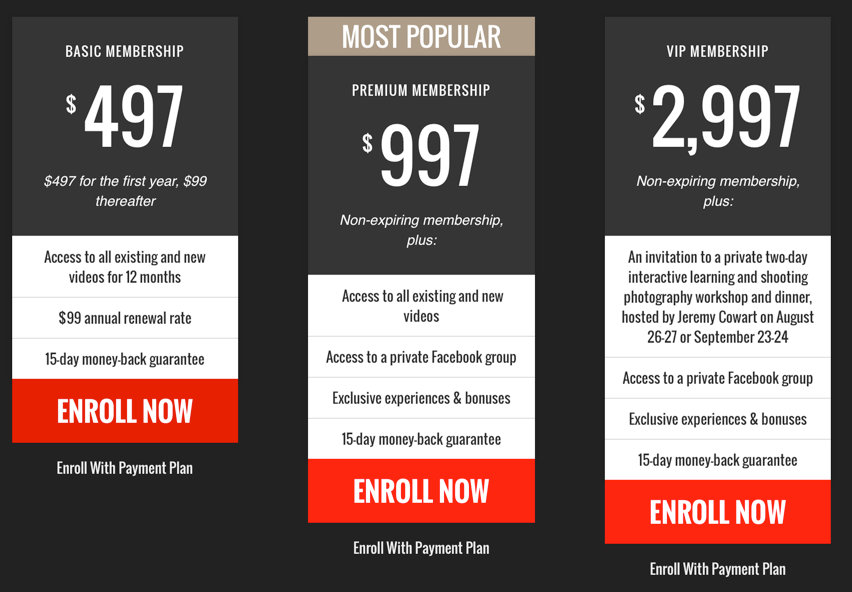
Kissmetrics is a web analytics tool that helps business owners keep track of important metrics, like customer conversions website engagement.
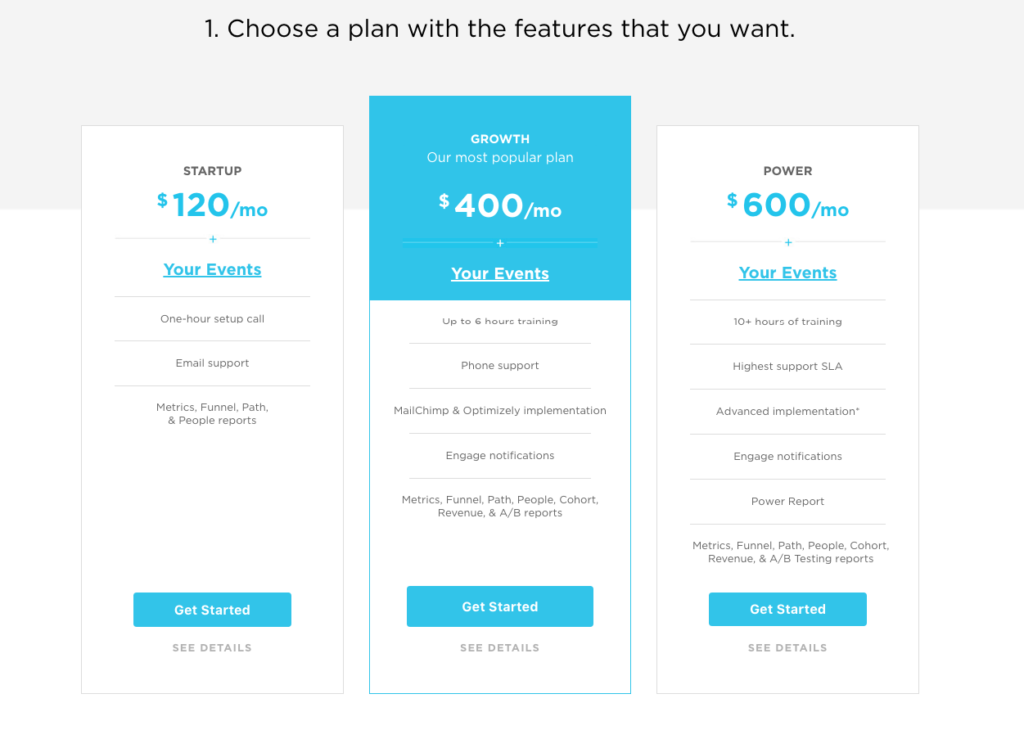
30 Days or Less to Freelance Writing Success is a course designed by Gina Horkey, which teachers aspiring freelancers how to start making money as an independent contractor.
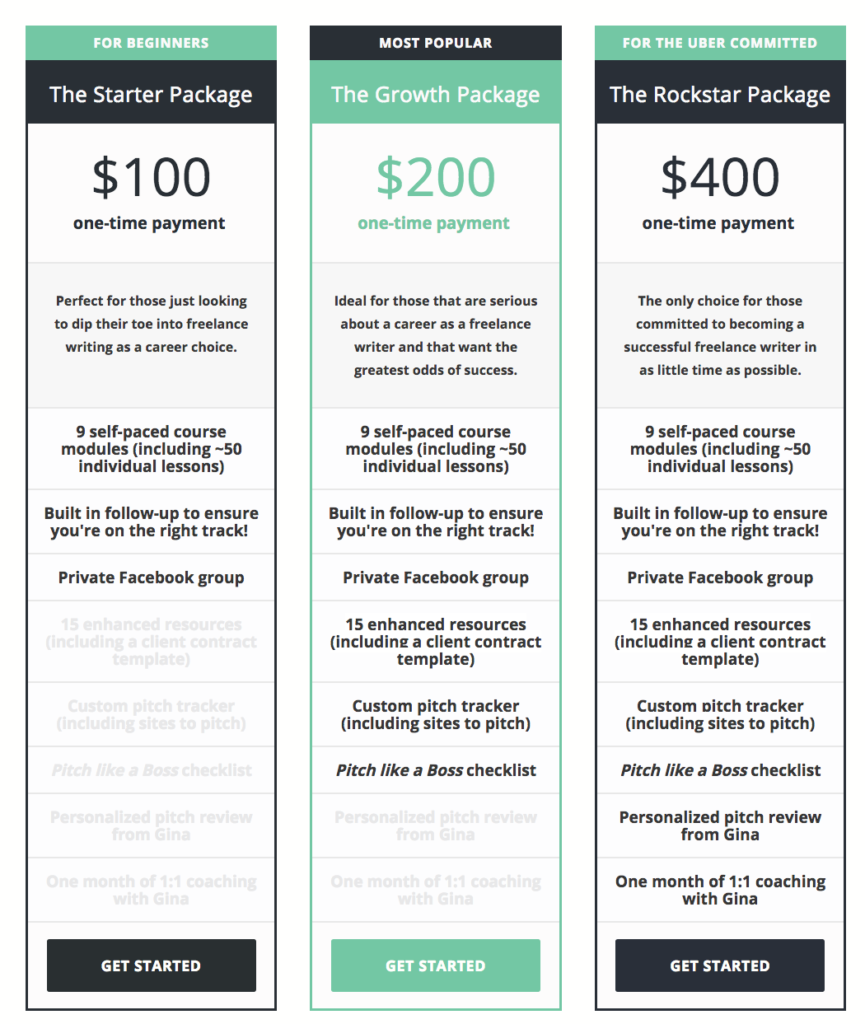
PopUp Domination is a an easy to use plugin that allows you to add pop-ups to your website, in order to convert more subscriber. Each pricing tier offers more options to the customer.
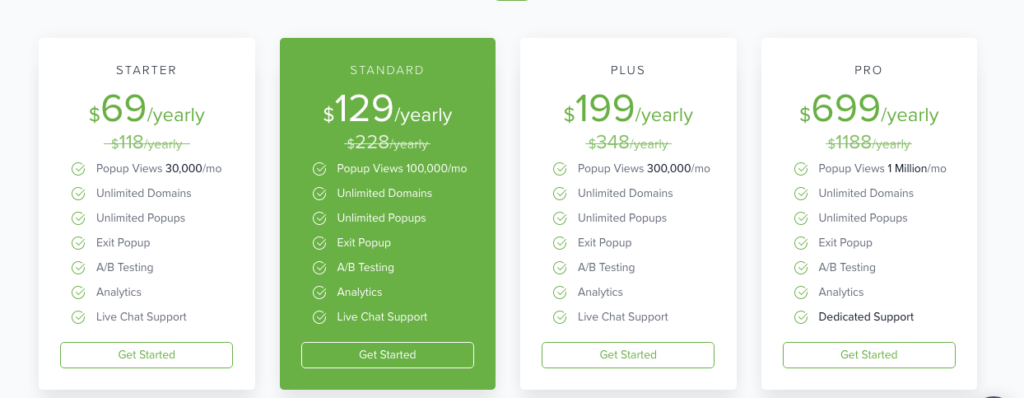
Here are 13 different things you can use to create your packages
It can be challenging to come up with items to add to your core product to create your packages.
So we did the hard work for you by combing through over 100 sales pages and building a list of 25 of the best packaged items you can add to your product.
Check them out…
– More quantity (multiple copies of your product)
– Higher quality (more in-depth functionality or features)
– Inclusion of a done-for-you service
– Group coaching
– One-on-one coaching
– Online call or webinar
– Partnering with another entrepreneur (Read this blog; I’ll show you how)
– Access for a longer time period (multi-year membership)
– Increased commitment from customers (e.g., they sign up for 6 months instead of 3)
– Program customization (customize your product to them)
– Advanced trainings on using the product (could be in person or in self-paces format)
– Case studies of successful customers (this helps them visualize exactly how to use it for themselves)
– Unlimited consulting with your team
Side note: If you can’t think of how to utilize tiered pricing in your industry, comment below and I’ll help you think of a way to do it.
5 steps you can take to start implementing tiered pricing
Earlier I told you we increased revenue by over $100k with tiered pricing.
The craziest part of that experiment was we were able to do that without adding any new bonuses or features to the core product.
Here is exactly what we did…
We simply took 5 items from our $1,200 package, removed them from that package and used them to create a brand-new $2,400 package.
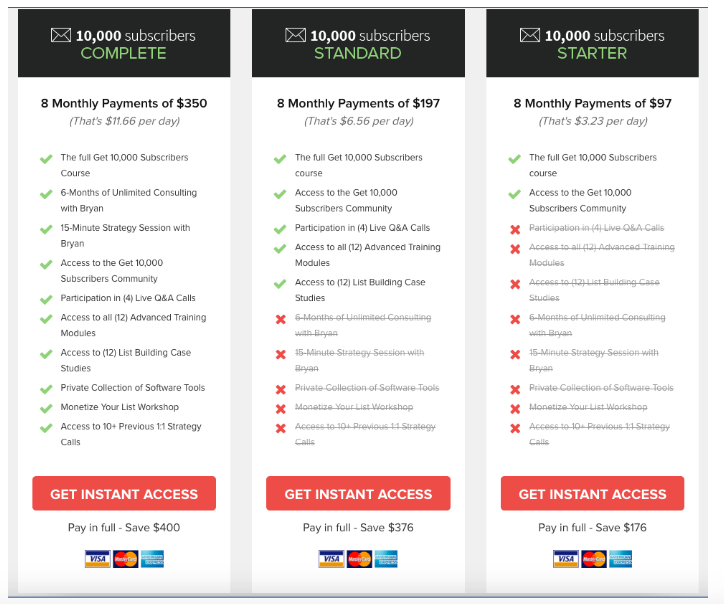
No new items. We simply tweaked our sales page so that instead of offering two packages, we offered three.
The results?
(Drumroll, please.)
…
…
…
…
During our second launch, the number of people who bought our smallest package stayed nearly the same. (45% bought on the first launch and 49% bought on the second launch)
But! And here is the wild part…
27% bought the $1,200 Standard package and 24% bought the $2,400 Complete package.
What does that mean?
Without the addition of the new package, 84 people (the number that bought the higher-end package) would have settled for just buying the $1,200 package and we would have lost out on $102,224 in sales.
$102,224!
All because we gave people a way to pay more money.
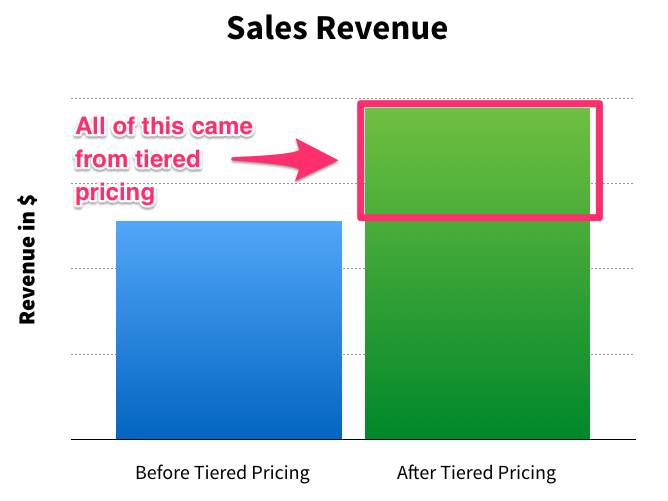
If you’ve never used tiered pricing, it doesn’t have to be difficult.
There are 5 simple steps you can follow:
Step #1: Understand tiered pricing.
Step #2: Decide on what will be included in your packages.
Step #3: Choose a name for your tiers.
Step #4: Price your three tiers.
Step #5: Launch and analyze the buying rate of each package.
We’ll break down each step in detail.
Step #1: Understand tiered pricing.
Now that you understand how tiered pricing works, there’s one important thing I want to note before you move forward.
Pricing is not just a marketing tactic. It’s also a validation strategy.
When you add tiered pricing to your products or services, you’re able to see what your customers respond to.
For instance,
- If NO ONE is buying your top-tiered package, it’s either too expensive or doesn’t give enough value.
- If NO ONE is buying your lowest-tiered package, it means that your top packages are probably priced too low.
I recommend having 3 tiers to your pricing. Any fewer doesn’t give people enough options. Any more gives people too many options.
When you break down your sales by percentages for:
45-55 % should be buying your lowest-priced package
20-30 % should be buying your mid-range package
10-15% should be buying your highest-range package
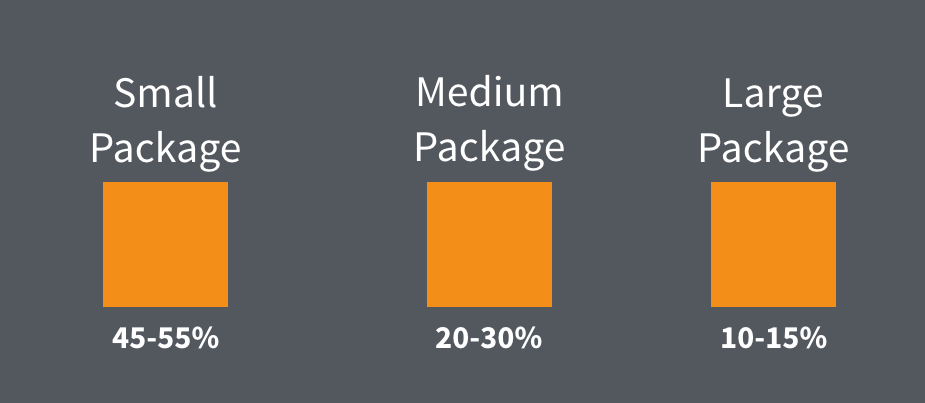
With tiered pricing, you can both validate your product and reach more customers.
Your lowest price offering is a great gateway for people to test you out and eventually upgrade to a higher-priced package.
Higher-priced packages give people the opportunity to spend more, which many people want to do to get the greatest value that they can.
Recap:
- Pricing is a validation strategy.
- Use 3 tiers to give you enough data points to inform long-term pricing.
- Fewer than 20% of your customers should be buying your highest-priced package.
Step #2: Decide on your package contents.
Now that you have a better understanding of why tiered pricing is a good idea and what it should look like, you can decide on what will be included in each of your packages.
Here’s an exercise to help you come to this conclusion. You can use this spreadsheet to help with the following exercise.
Note: You will need to click “File” > “Make a Copy” in order to edit this document.
Action #1. Create a list of every package item you can think of.
List everything you could offer in your packages. Map it out into one giant list. Get creative here. What is your base product? What could be added to make it even more desirable?
Here’s a list of items that could be added to your packages:
– More quantity (multiple copies of your product)
– Higher quality (more in-depth functionality or features)
– Inclusion of a done-for-you service
– Group coaching
– One-on-one coaching
– Online call or webinar
– Partnering with another entrepreneur (Read this blog; I’ll show you how)
– Access for a longer time period (multi year membership)
– Increased commitment from customers (e.g., they sign up for 6 months instead of 3)
– Program customization (customize your product to them)
– Advanced trainings on using the product (could be in person or in self-paces format)
– Case studies of successful customers (this helps them visualize exactly how to use for themselves)
– Unlimited consulting with your team
Action #2: Create your top-tier package.
After you’ve listed out everything that you could offer, go ahead and create your TOP-tier package.
You might include everything you wrote down in your brainstorming list, or you might choose the ones with the highest values.
What could you include that would be the most enticing and would provide the most value?
Here is what our top tier package for 10ksubs looks like:
Action #3: Create your mid-tier package.
After you create your top-tier package, create your mid-tier package.
Just remove some of the add-ons or downsize some of the advantages of the top-tier program (shorter membership, results a little slower, less included, etc).
Action #4: Create your base package.
Lastly, create your base package. This should be your “bare-bones” package that doesn’t include any (or includes much fewer) of the extras included in the mid-tier package.
After you’ve listed what will be included in each package, take a look at your completed packages. Ask yourself these questions:
• Are each of these packages enticing?
• Do each of these packages really give value to the customer?
• Is the mid-tier package more enticing than the low-tier package?
• Is the top-tier package more enticing than the mid-tier package?
• What is one thing I could add to each package to make it better?
Once you’ve completed creating your packages, you’re ready for the next step.
Action Items:
• List out everything your packages could include.
• Create your top-tier package.
• Create your mid-tier and base-tier packages.
• Complete your packages by using the evaluation questions above.
Use this pricing tier planning spreadsheet to help you create your packages
Step #3: Choose a name for each of your tiers.
This is a quick but important step.
It’s also easy to spend wayyyy more time than needed thinking and stressing over the names of the tiers.
You want your customers to see the value in each package individually before they even see what is included in it. But realize the names of your tiers don’t matter a ton. Picking the perfect names won’t magically turn your product into a best seller.
Here are some different name ideas for tiered pricing:
Basic; Plus; Premium
Starter; Standard; Complete
Starter ; Professional; Advanced
Classic; Preferred; Exclusive
Basic; Pro; Enterprise
Bishop; Queen; King
Bronze; Silver; Gold; Platinum
Hobby; Startup; Professional; Business
Go ahead and name your three packages. What will you call each package to distinguish it and show its value?
Action Item: Name each of your tiered packages.
Step #4: Price your three tiers.
Pricing your services can be tricky.
I’m going to be brutally honest with you right now.
When we first launched 10ksubs, there was not much strategy involved in pricing my program.
Pricing is one of those things that you can mull over for so long that you never ship your product. It can easily turn into a fancy form of procrastination.
Remember, you are setting your prices up to be used as validation, so they will likely change after your first launch. So just know that this process shouldn’t take you days or weeks to complete.
I challenge you to set a timer and decide on your prices in less than an hour. Capisce?
Here’s an easy system for finding the sweet spot when it comes to pricing:
#1: Look at comps in your industry.
Do you have a list of the top influencers in your niche?
Take a look at their offerings. What do their packages look like? Are yours comparable? What are their prices?
Look at 3 to 5 examples of products similar to what you offer and write down the prices of those products.
#2: Price your base-tier package.
Based off your research, what is a good price for your base-tier package?
Don’t overthink this. Just go with what your gut says. Remember, you’ll be validating all of this information later.
#3: Price your mid-tier and top-tier package.
Now that your base package is in place, there is a simple way to come up with the pricing for your next two tiers.
Double them.
Yep. Simply double the price of your base-tier package to come up with the price of your mid-tier package. Then double the price of your mid-tier package to come up with your top-tier package.
For example…
If your research and validation shows you that the lowest price point needs to be $29, then double that to $59 for your mid package and $119 for your high-end package.
After doing this, you will have one of three results:
1. You feel great about the rates of your packages. They are comparable and provide a lot of value for the price.
2. You think they are too expensive. Don’t lower the price. Just think of what you could add to make the packages WORTH the price.
3. You think they are not expensive enough. You may have provided SO much value in your packages that your pricing doesn’t reflect all they’re worth. In that case, keep your base package the same but increase the prices of your mid-tier and top-tier packages.
Action Items:
• Look at people who offer a product or service similar to yours. List out the prices for their packages.
• Price your base-tier package.
• Price your mid-tier and top-tier packages by doubling the price of the package under it.
Step #5: Launch and analyze the buying rate of each package.
You have your packages in place. It’s time to launch your product.
Since the focus of this post is pricing your services, I’m not going to go into all the details of how to launch. If you need help with this step, I recommend reading these articles:
How we launched an online course and made $220,750 in 10 days
How to quickly start a coaching program that makes $500 an hour
After you have launched your new product or service, look at the buying rates of your packages and adjust your pricing to hit the target % rates outlines above.
What your percentages may be telling you
- Take a look at your own percentages. What are they telling you?
- If your top-tier package is not selling at all, the price may be too high or there may not be enough value for the money.
- If your top-tier package has around 20% of people purchasing it, it is priced well.
- If your top-tier package has more than 20% of people purchasing it, you may need to increase its price or add another, higher-priced tier to your packages.
- Is no one buying anything? You might need to completely repackage your services to add more value or you might need to develop a better launch strategy.
Your pricing structure is as much of a validation strategy as it is a marketing strategy. What do your percentages tell you about the validation of your product idea and the pricing of your packages?
Action Items:
• Launch your product or service.
• Evaluate your package splits.
• Tweak your pricing to hit the ranges outlines in this article.
It’s your turn!
Follow the steps outlined in this article to develop your own tiered pricing structure.
Let’s recap what you’ll need to do:
Step #1: Understand tiered pricing.
Step #2: Decide on what will be included in your packages.
Step #3: Choose a name for your tiers.
Step #4: Price your three tiers.
Step #5: Launch and analyze the buying rate of each package.
PS: If you can’t think of how to utilize tiered pricing in your industry or aren’t sure exactly what should be in each package, leave a comment below and I’ll help you out!
